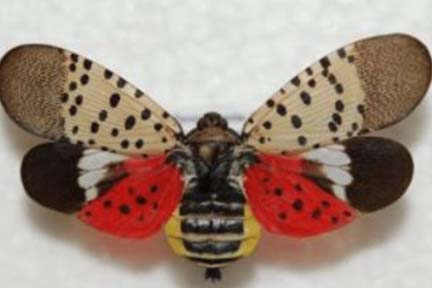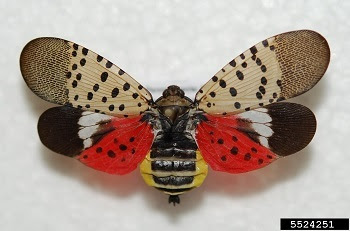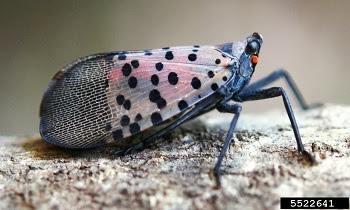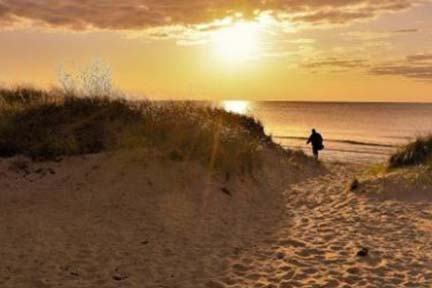Sept. 14, 2021
Contact: Lt. Vence Woods (DNR), 989-705-3449
DNR receives global award for investigation of illegal toxic chemical dumping by Flint company
The Michigan Department of Natural Resources was honored Monday for an environmental investigation led by conservation officers in the DNR Law Enforcement Division revealing that Flint-based Oil Chem illegally disposed of more than 47 million gallons of environmentally harmful liquid in the City of Flint’s sewer system over an eight-year period.
DNR Law Enforcement Division Chief Gary Hagler, together with Lt. Vence Woods, accepted the 2021 Chief David Cameron Leadership in Environmental Crimes Award at the International Association of Chiefs of Police annual conference, held virtually this year.
“It is fantastic to see the DNR’s Law Enforcement Division and Environmental Investigations Section recognized with this prestigious IACP award,” said Hagler.
The DNR’s environmental investigation detectives are funded by, and conduct criminal investigations for, the Michigan Department of Environment, Great Lakes, and Energy.
“Our partnership with EGLE is mutually beneficial and very productive for the residents of our state,” Hagler said. “This is an honor that law enforcement agencies around the world compete for.”
This short video posted to the IACP website takes a look at the investigative work of DNR conservation officers.
Case background
In October 2015, Detective Jan Erlandson, conservation officer in the DNR’s Environmental Investigations Section, received a complaint from an employee at the Flint Wastewater Treatment Plant. The employee believed that Oil Chem was receiving leachate from area landfills and illegally dumping it into the sanitary sewer, which flows into the Flint River. The treatment plant’s discharge point for the treated wastewater was downstream of the location where drinking water was taken from the Flint River in 2014 to 2015.
According to the U.S. Environmental Protection Agency, leachate is formed when rain water filters through wastes placed in a landfill. When this liquid comes in contact with buried wastes, it leaches, or draws out, chemicals or constituents from those wastes.
Oil Chem is a global company that specializes in the formulation and custom blending of metalworking lubricants, industrial cleaning chemicals and maintenance oils. Consistent with a permit issued by the City of Flint under the Clean Water Act, the company was not permitted to accept leachate or to discharge any amount of polychlorinated biphenyl waste. PCBs have been shown to cause a variety of adverse health effects, notably cancer in animals. Noncancer effects include impacts to the nervous, immune, reproductive and endocrine systems, among others.
Erlandson’s investigation revealed that Robert Massey, Oil Chem’s owner, authorized from 2007 to 2015 for the company to accept leachate from eight different landfills – including People’s Landfill, a garbage dump in Saginaw County, which contained PCB waste. This put Oil Chem and Massey in direct violation of laws prohibiting discharging on-site wastewater into state waters and disposal of liquid industrial byproducts.
Resolution and penalties
Based on Erlandson’s investigation, the case was pursued by the EPA’s Criminal Investigations Division, which resulted in Massey’s indictment.
In December 2020, Massey signed a plea agreement for violating the Clean Water Act, and, in May 2021, he was sentenced to 12 months in federal prison by the United States District Court, Eastern District of Michigan. Oil Chem paid a civil fine of $250,000 to the City of Flint and EGLE revoked the company’s waste hauler license.
Detective Erlandson, now retired, served the DNR Law Enforcement Division from 2000 to 2021.
“The Michigan DNR Environmental Investigations Section would like to thank the EPA Criminal Investigations Division, the Michigan Department of Environment, Great Lakes, and Energy’s Materials Management and Water Resource divisions and Michigan State Police for their assistance with this criminal investigation,” said Lt. Vence Woods, DNR Environmental Investigation Section supervisor.
Known for its commitment to enhancing community safety by shaping the future of the police profession, the International Association of Chiefs of Police is the world’s largest and most influential professional association for police leaders. Since 1893, IACP has been serving communities worldwide by speaking out on behalf of law enforcement and advancing leadership and professionalism in policing worldwide. With more than 31,000 members in over 165 countries, IACP is a recognized leader in global policing, committed to advancing safer communities through thoughtful, progressive police leadership.
Michigan conservation officers are fully commissioned law enforcement officers who protect natural resources, ensure recreational safety and protect residents by providing general law enforcement duties and lifesaving operations in the communities they serve. Due to the nature of their job, these officers often work with federal, state and local law enforcement officers to ensure public safety. Learn more at Michigan.gov/ConservationOfficers. |





 First detected in the United States in 2014 in southeastern Pennsylvania, spotted lanternfly has been spreading rapidly across the northeastern states. There have been confirmed infestations in Connecticut, Delaware, Indiana, Maryland, New Jersey, New York, Ohio, Virginia, and West Virginia.
First detected in the United States in 2014 in southeastern Pennsylvania, spotted lanternfly has been spreading rapidly across the northeastern states. There have been confirmed infestations in Connecticut, Delaware, Indiana, Maryland, New Jersey, New York, Ohio, Virginia, and West Virginia.
 From late summer to the first hard frost, spotted lanternflies are in their adult stage. Adults are roughly one inch long. Their folded wings are gray to brown with black spots. Open wings reveal a yellow and black abdomen and bright red hind wings with black spots transitioning to black and white bands at the edge.
From late summer to the first hard frost, spotted lanternflies are in their adult stage. Adults are roughly one inch long. Their folded wings are gray to brown with black spots. Open wings reveal a yellow and black abdomen and bright red hind wings with black spots transitioning to black and white bands at the edge.
 Individuals and businesses receiving shipments from states known to have spotted lanternfly should also be on the lookout for adults or egg masses on goods and packing materials.
Individuals and businesses receiving shipments from states known to have spotted lanternfly should also be on the lookout for adults or egg masses on goods and packing materials.






 Want to see more pictures like this, taken by Michigan state parks photo ambassador
Want to see more pictures like this, taken by Michigan state parks photo ambassador  Educators of all types will head to Eastern Michigan University, in Ypsilanti, next month for the state’s premier environmental education conference. It takes place Oct. 1-3, a full weekend of workshops, field trips and breakout classes aimed at inspiring teachers, Scout leaders, and staff and volunteers from zoos and nature centers to consider creative, new ways of connecting with students and visitors.
Educators of all types will head to Eastern Michigan University, in Ypsilanti, next month for the state’s premier environmental education conference. It takes place Oct. 1-3, a full weekend of workshops, field trips and breakout classes aimed at inspiring teachers, Scout leaders, and staff and volunteers from zoos and nature centers to consider creative, new ways of connecting with students and visitors.

 Enjoy Michigan’s abundant small game hunting opportunities this fall, all with your base license.
Enjoy Michigan’s abundant small game hunting opportunities this fall, all with your base license.
 Several fisheries orders, a land use order regarding beach access, introduction of DNR Wildlife Division Chief Jared Duquette and several land transactions are just some of the agenda items for the next meeting of the Michigan Natural Resources Commission, scheduled for Thursday, Sept. 16.
Several fisheries orders, a land use order regarding beach access, introduction of DNR Wildlife Division Chief Jared Duquette and several land transactions are just some of the agenda items for the next meeting of the Michigan Natural Resources Commission, scheduled for Thursday, Sept. 16.
